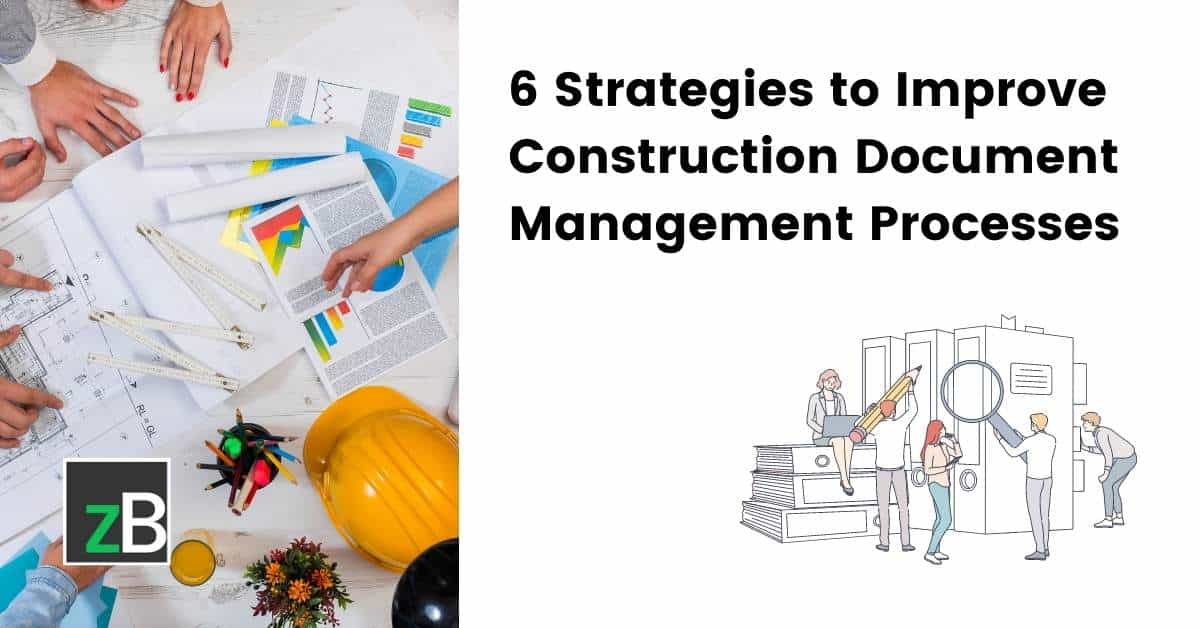Elevate Your Project Management: Construction Document Management Devices You Required
Elevate Your Project Management: Construction Document Management Devices You Required
Blog Article
Optimizing Task Collaboration: Architect's Ideal Practices in Building And Construction File Management
In the detailed realm of building tasks, the reliable monitoring of building papers stands as a foundation for success. Designers, with their precise interest to detail and ingenious style options, are tasked with managing a harmony of timelines, stakeholders, and resources. Among this intricacy lies an important question: exactly how can engineers enhance cooperation processes to enhance project outcomes? By exploring crucial strategies such as leveraging cloud-based platforms, developing durable interaction protocols, and ensuring information safety and security, designers can boost their document management methods to new elevations.
Leveraging Cloud-Based Systems
Leveraging cloud-based systems is an essential strategy for modern-day designers in enhancing building record monitoring processes. By transitioning from traditional paper-based systems to shadow remedies, designers can streamline cooperation, enhance paper availability, and enhance overall task efficiency. Cloud-based systems provide designers the ability to shop, share, and upgrade building papers in real-time, making sure that all team participants have access to one of the most present information regardless of their place. This ease of access promotes smooth interaction and coordination among project stakeholders, leading to fewer mistakes and hold-ups in the building procedure.
In addition, cloud-based systems give a safe and secure environment for keeping sensitive project details, using encryption, routine backups, and individual permission settings to protect data integrity. Architects can also take advantage of the scalability of cloud options, allowing them to adjust storage ability and functionality based on job needs. Overall, leveraging cloud-based systems empowers designers to enhance their building and construction file administration procedures, driving greater collaboration, performance, and success in their jobs.
Executing Version Control Systems
Having actually established the advantages of cloud-based systems in building and construction document management, architects can currently enhance their record control procedures by applying Variation Control Systems. Version Control Solution (VCS) are important devices that track changes in records, making certain that staff member are always dealing with the current and most precise details. By implementing VCS, designers can maintain a centralized repository where all job papers are saved, allowing smooth cooperation while reducing the threat of mistakes and variation conflicts.
One key benefit of Version Control Solution is the capability to track the complete history of file changes, enabling individuals to revert to previous versions if needed (construction document management). This attribute is particularly beneficial in building projects where style versions and adjustments are typical. VCS facilitates far better communication among group participants by offering a clear audit path of that made particular modifications and when they were made. This openness not only improves responsibility yet also helps in settling disputes or discrepancies that might arise throughout the project lifecycle.
Developing Communication Protocols
To ensure effective and reliable task control, architects should establish clear and durable communication protocols within their building paper administration processes. This platform might be a project management software, email threads, or cloud-based storage solutions.
In addition, interaction methods need to also consist of guidelines on how to handle problems, modification orders, and immediate concerns that may develop during the project lifecycle. Developing an organized technique to interaction makes sure that all stakeholders get on the same web page, advertises openness, and eventually adds to the successful completion of the building job.
Utilizing BIM Software Program for Sychronisation
BIM software program plays a crucial role in boosting control among job team participants in the construction market. Building Information Modeling (BIM) assists in collaboration by providing a central platform where designers, engineers, professionals, and other stakeholders can collaborate in a collaborated fashion. Through BIM software program, task participants can access and upgrade a shared design that consists of in-depth details concerning the structure design, building elements, and find more job timetables.

Furthermore, BIM software application makes it possible for real-time cooperation and communication among employee, despite their physical place. With cloud-based BIM systems, task stakeholders can access the current project details, track adjustments, and make notified decisions without delay. Overall, leveraging BIM software application for control boosts task effectiveness, performance, and eventually causes successful task results.
Ensuring Information Safety And Security and Conformity
In the world of construction record monitoring, guarding data stability and making certain governing compliance are critical factors to consider for engineers and other project stakeholders. Designers have to apply robust security procedures to secure sensitive job details from unauthorized accessibility or breaches.

Verdict
To conclude, designers can maximize task collaboration in construction document monitoring by leveraging like this cloud-based systems, implementing variation control systems, developing interaction procedures, utilizing BIM software program for use this link sychronisation, and ensuring information safety and security and compliance. These finest methods aid enhance the building process, enhance communication amongst job stakeholders, and enhance effectiveness in project distribution. By following these guidelines, architects can properly manage building and construction papers and assist in successful task end results.
Via BIM software application, job participants can access and upgrade a common version that contains thorough details about the building design, construction components, and project schedules.
Via cloud-based BIM systems, job stakeholders can access the latest project details, track modifications, and make informed decisions immediately - construction document management. Generally, leveraging BIM software for control improves task performance, performance, and eventually leads to effective task results
In conclusion, designers can optimize task cooperation in building and construction file administration by leveraging cloud-based systems, implementing version control systems, establishing communication procedures, making use of BIM software program for coordination, and guaranteeing data security and compliance. These best techniques help streamline the construction process, boost interaction among project stakeholders, and enhance effectiveness in job delivery.
Report this page